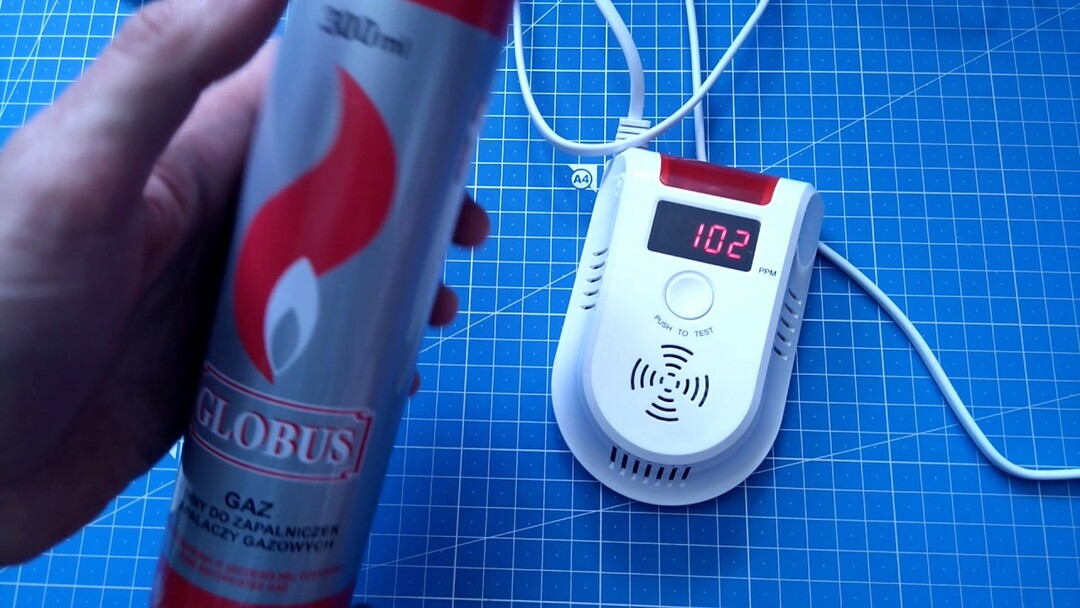It is likely that you have come across government controls over gas appliances. Perhaps you are an entrepreneur and even the smallest aspects of costs matter to you? We believe that a very small number of the population knows the rules for checking gas analyzers, and meanwhile, an unsuccessfully chosen device will eventually cost tens of thousands of rubles overpayment.
We tried to collect all the useful information together. We are talking about all the key points: norms, frequency, stages of verification. You will thoroughly approach the choice of a gas analyzer if you read the material we have presented.
Gas analyzers are subject to state regulation, as they ensure safety at facilities from various fields of human activity. This concerns, first of all, verifications, which are performed to ensure compliance with the metrological characteristics. Let's figure out together how verification activities are carried out.
The content of the article:
- Gas Analysis Instruments Features
- Applications of gas analyzers
-
Calibration of gas analyzers in Russia
- Preparation for verification of a gas meter
- Equipment inspection sequence
- Normative guidelines for the calibration of gas analyzers
- Conditions for work
- What do you need to know about periodicity?
- What is the essence of the verification work method?
- Conclusions and useful video on the topic
Gas Analysis Instruments Features
A gas analyzer is a device for determining the quantitative and qualitative composition of a gas mixture. This is what science says. Hand-held absorption analyzers, in which the reagents gradually absorb the constituents of the gas, have become widespread. Automatic devices continuously determine the physical and physicochemical quantities of mixtures and their components.
Gas analyzers are divided into 3 groups. All devices operate on physical methods of analysis, and the difference is expressed in the ability to take into account chemical processes.
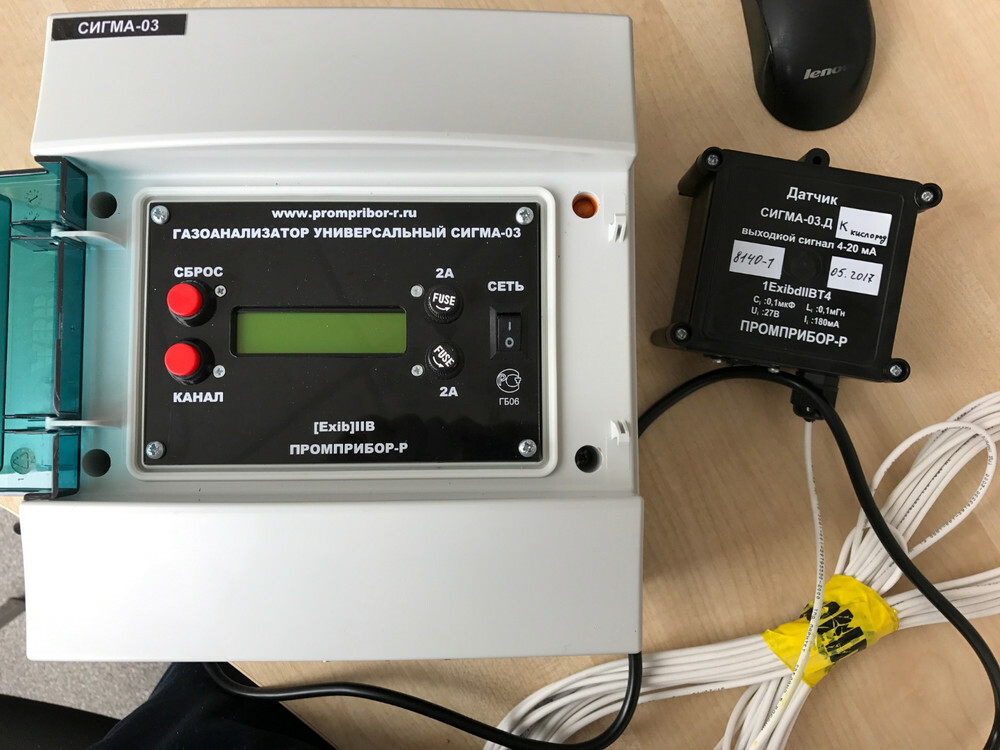
Sigma-03 is a stationary multichannel analyzer with separate units and modules, including the SIGMA-03.IPK infoblock; the set also includes up to 8 hardy sensors
Type 1 devices also monitor associated chemical reactions. Analyzers determine changes in the pressure of the fuel mixture and its volume after chemical interaction between the components.
Gas analyzers of the 2nd type give indicators of physical analysis, which applies to chromatographic, photoionization, electrochemical, thermochemical and other physical and physical and chemical processes.
Type 3 devices work only on the principle of physical analysis. They have magnetic, densimetric, thermoconductometric and optical measurement methods.
Instruments for analyzing gas mixtures are also classified:
- by appointment;
- by the number of measuring channels;
- by the number of measured components;
- by design;
- by functionality.
It is worth knowing in more detail about devices that differ in the latter characteristic. Gas analyzers perform the functions of conventional measuring instruments, as well as alarms, leak detectors, indicators.
Applications of gas analyzers
Gas meters are used in explosive objects, CHP boilers, chemical industry enterprises, and vehicles. Analyzers are also used before hot work in wells and basements.
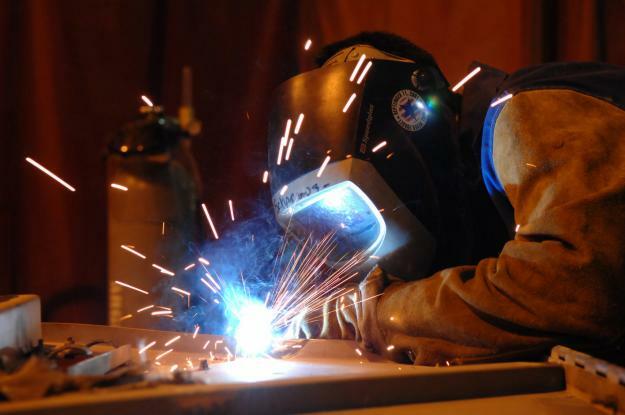
Explosive gases pose a particular threat in confined and narrow spaces - this is why gas analyzers are indispensable for hot work in basements and wells
The devices benefit the owners of gas, vacuum and refrigeration equipment: thanks to the meters, they determine leaks, leaks, and the concentration of combustible gases. Physicians use gas analyzers to monitor the concentrations in the breathing circuit during pain relief procedures. In the field of nature protection, these devices have also found useful applications.
For more information on how the gas analyzer works, see this material.
Calibration of gas analyzers in Russia
Measuring devices subject to state supervision are examined for compliance with metrological characteristics. Ordinary citizens and entrepreneurs should know that since 2008, activities in this area have been regulated by Federal Law No. 102 "On Ensuring the Uniformity of Measurements". A gas analyzer or other metering device is verified at a certain frequency, usually once a year.
Preparation for verification of a gas meter
Calibration gas mixtures (CGM) in cylinders are kept for 24 hours in the calibration room. The gas analyzer itself is stored there for at least 2 hours. At the same time, means of inspection are being prepared, which is discussed in the operational documentation.
Based on the documents and the operating manual for a specific product, the analyzer is checked, after which the device is prepared for operation. Preparatory measures are a component of the calibration method for any type of gas analyzer; in the technical documentation, it corresponds to the 5th paragraph.
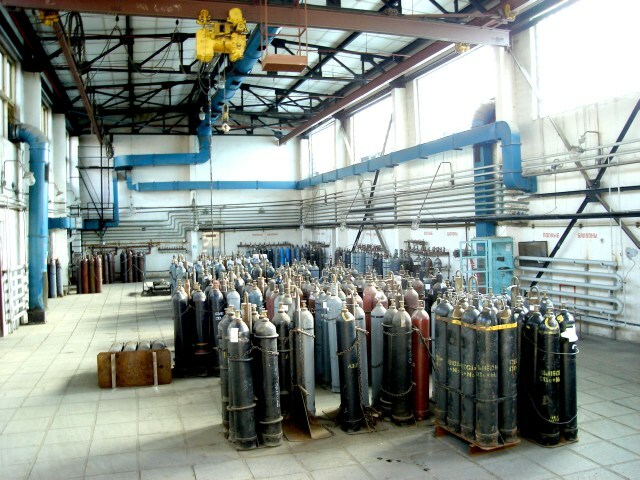
There are a wide variety of calibration gas mixtures on the market, but only state standard samples (GSO) are used for calibration work.
The essence of the verification comes down to the fact that the gas mixture is passed through the gas analyzing equipment at the required speed. When the number of cylinders is more than 1, a multi-way valve is used. The composition is switched by a simple turn of the crane.
Equipment inspection sequence
Verification begins with an external examination, and visible problems and damage are taken into account. They also look at the clarity of the inscriptions on the front panel, the state of the threads on the fittings. According to the instructions for a specific gas analyzer, a serviceability check is carried out.
In the process, the gas mixture will pass through the reducer and enter the line to the sensor. The check will come to a logical conclusion when the specialist determines the main indicators metrological characteristics: errors in measurements, as well as variations in indicators with different gas content.
The verifying organization will issue a certificate or leave a stamp on the device. Due to the design of some gas analyzers, the mark is sometimes placed directly on a paper document.
There are 5 types of verification:
- primary;
- periodic;
- extraordinary;
- inspection;
- expert.
The primary one is implemented before the start of the analyzer operation. Also, after the repair, the owners will have to repeat the procedure.
Periodic checks are performed as planned. Schedules are indicated in the documentation, and these schedules are compiled by the metrological services of enterprises. After the plan is approved by Rosstandart, it will still have to be approved by the head of the company.
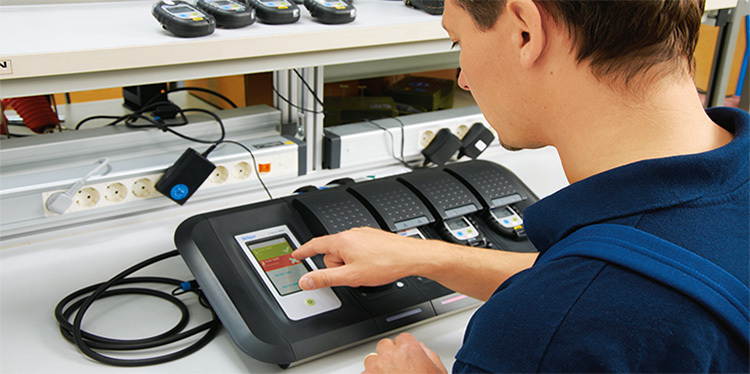
To carry out verification, they also turn to private companies: the latter meet halfway on various issues, and their data can be useful in disputable situations
Extra verification will be required in case of loss of the equipment inspection document, damage or prolonged downtime of the device.
Also, gas analyzers are subject to inspection. This means a visit within the framework of the state metrological supervision.
In case of disagreement on metrological characteristics, they resort to expert verification. It can be appointed by the prosecutor's office or the court, but sometimes the desire of the consumer is enough.
Normative guidelines for the calibration of gas analyzers
The devices must work correctly with radio interference with values within the limits of the Norms 1-72-9-72. As for the indicators of the gas analyzers themselves, then not only the flow rate, but also the flow rate instead of it can fall under the rationing if needed. The main error in which case is replaced by random and systematic components.
Metrological standards are established in technical or standard conditions for a specific gas analyzer, depending on the scope of application and indicating the conditions for verification work on GOST 8.401-80. Under normal conditions, the difference between the extreme values of measurements for the permissible basic error is allocated within 25%.
Conditions for work
The first step is to ensure safety. Only those rooms are suitable for verification where there is supply and exhaust ventilation. After fulfilling this requirement, the content of harmful substances in the working area of the enterprise is checked, and the norm was indicated in GOST 12.1.005.
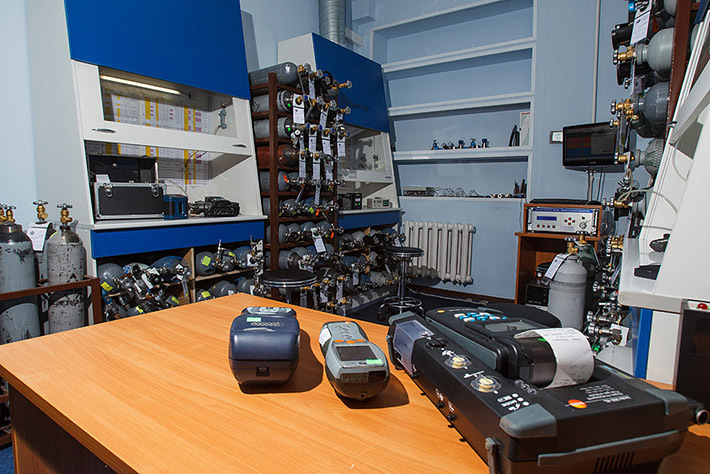
The owner of the enterprise is responsible for the safety in the calibration room, for each type of explosive gas there is a permissible concentration in the air
Employees are protected from electric shock - based on GOST 12.2.007.0 and for the rest of the requirements from the safety regulations. Usage gas mixtures in cylinders normalize PB 03-576-03, they are also - Rules for the Construction and Safe Operation of Pressure Vessels.
To carry out the verification, you will have to comply with the following requirements and restrictions:
- voltage 220 V;
- SGM consumption at the level of 0.18-0.35 dm³ / min;
- atmospheric pressure not lower than 84 kPa and not higher than 106;
- relative air humidity in the range of 30-80%;
- ambient temperature from +15 to +25 ° C.
Verification is carried out only by certified employees using measuring instruments for PR 50.2.012-94. Before doing their job, they should read the manual for the gas analyzer, as well as work with the instruments.
In the process, the specialist will keep a protocol and enter the following data:
- Document Number;
- date;
- the name of the owner of the gas analyzer;
- number of the verified device;
- instrument readings and error parameters.
As a result, the owner of the meter will receive a signed certificate with the mark “Good”, but if the quality of the device is not lucky, then a notice with the record “Not good”.
Representatives of the Center for Standardization and Metrology will immediately stop verification if they receive unsatisfactory result for variation of readings, basic or absolute error, time alarm triggering.
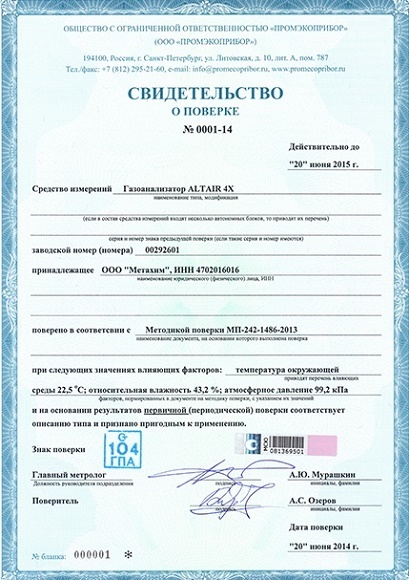
The verification report must confirm the suitability of the product, as well as certify compliance with the methodology for a particular gas analyzer, indicating its name and serial number
Before verification, fuel metering equipment must have an information block, a charger and a passport. The same applies to the act of the last verification, if it was carried out, as well as replaceable cassettes and remote probes, if any.
What do you need to know about periodicity?
Legislators at the state level obliged all organizations that own gas analyzers to provide these devices for verification. The work is carried out by representatives of the State Metrological Service and certified services of private organizations. The frequency indicator for checking the sensor depends on the model of the gas analyzer, but the law says about a period from 6 to 12 months, but at least once a year. However, some devices require inspection at least once every 6 months.
The period for inspection of the equipment may be established by the local metrological service structures. The staff of the Centers for Standardization and Metrology sometimes abuse their position and increase the frequency of inspections. The UCM can set a six-month verification period for no good reason.
Calibration is also distinguished - a set of measures for gas analyzers that are used outside the scope of state regulation. The interval between calibrations is not clearly stated. At the same time, the methodology sometimes indicates technically sound recommendations about the timing for the next such procedure.
What is the essence of the verification work method?
The verification procedure is a document with detailed operations to confirm the suitability of the gas analyzer. The approach is different for different brands and models.
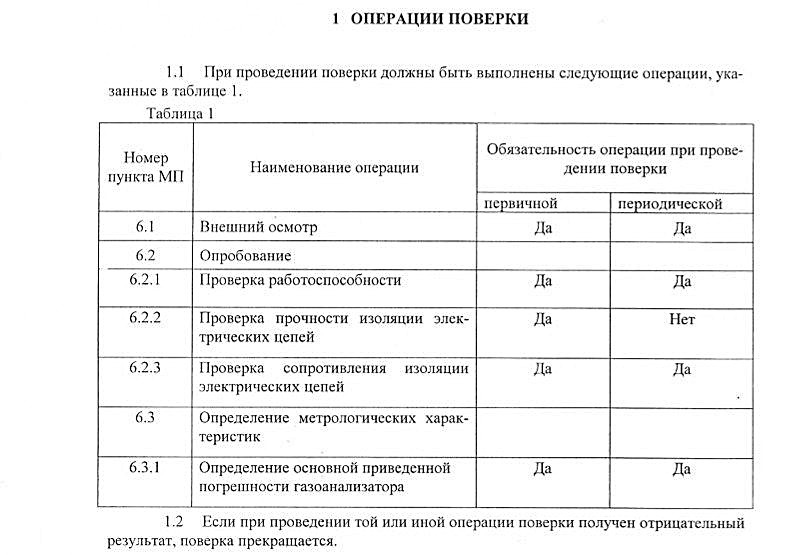
Excerpt from the methodology for gas analyzers models 1800, 1900, 2200, 5100, 5200 by Servomex Group Limited: the first point - verification operations
The document usually includes 7 points:
- Verification operations. These are the main indicators, including errors.
- Funds. These include instruments and gas mixtures for testing and determining metrological characteristics.
- Safety requirements.
- Conditions for holding.
- Preparation.
- Carrying out.
- Registration of verification results. At this stage, the attorney draws up a protocol and issues a certificate document.
The verification itself begins with the fact that a cylinder with a span gas is connected to the control valve. Then a rotameter is brought to the exit. The latter is connected with an adapter for verification work. The mixture is then fed into the gas analyzer inlet, and when the instrument gives readings, they are recorded.
The specialist will calculate the error and determine the time it took to establish the readings. The verifier will compare the indicators with the standards and draw up the results.
Conclusions and useful video on the topic
Overview of a household gas analyzer, connection, principle of operation, testing:
Calibration of gas analyzers and gas alarms using modern equipment:
Verifications themselves will not cause organizational difficulties, especially if safety issues have been given due attention. The device for determining the gas composition is considered suitable after the basic and absolute errors are acceptable. It is quite possible that the timing for checking the gas analyzer will become a problematic moment. The consumer should seek a one-year interval instead of an unreasonably short period. An unsatisfactory result in terms of metrological characteristics can also be disputed.
Leave your comments, ask questions on the topic of the article, share your experience and exchange useful information. The contact form is located under the article.


